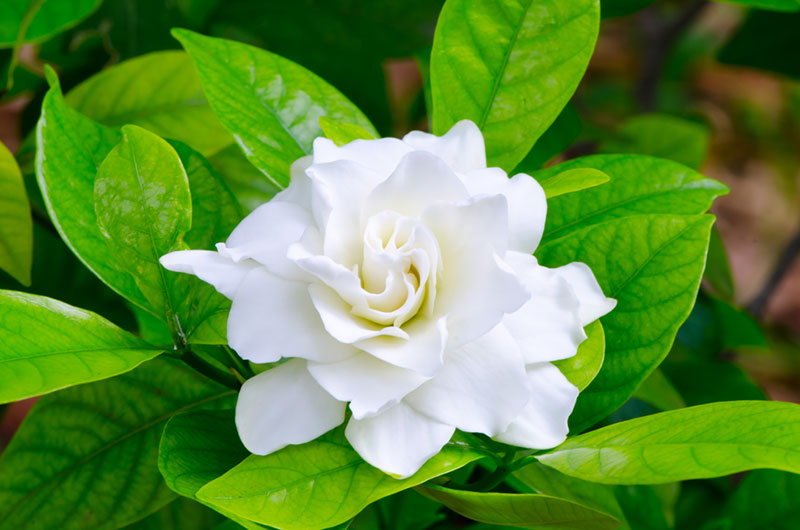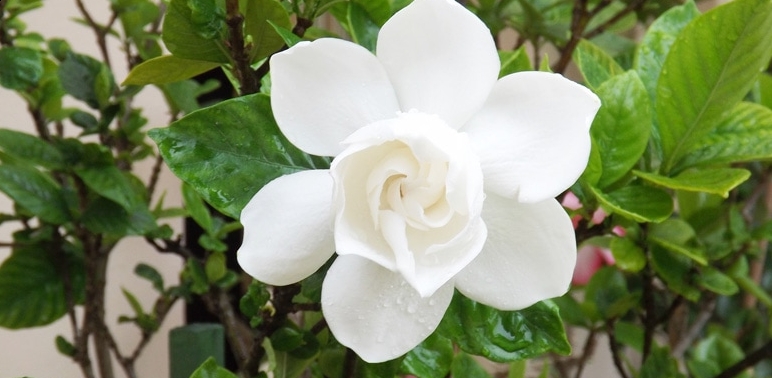To care for Cape Jasmine, provide it with moist, well-draining soil and keep it in a spot with partial shade. Cape Jasmine, also known as Gardenia jasminoides, is a popular and fragrant flowering shrub that requires specific care to thrive.
With its glossy foliage and beautiful white flowers, this plant adds a touch of elegance to any garden or indoor space. In the following paragraphs, we will discuss the essential care tips for Cape Jasmine, including watering, fertilizing, pruning, and pest control.
By following these guidelines, you can ensure that your Cape Jasmine remains healthy and produces abundant blooms throughout the year. So let’s dive in and explore the ways to care for this beautiful plant.

Credit: www.gardenloversclub.com
How to Care for Cape Jasmine: Step by Step Guide
Understanding Cape Jasmine
Cape Jasmine, also known as Gardenia jasminoides, is a beautiful flowering plant that requires proper care. Understanding the characteristics and significance of Cape Jasmine is essential for its well-being. This plant is known for its glossy dark green leaves and fragrant white flowers.
It thrives in well-drained soil and requires regular watering to keep the soil evenly moist. Cape Jasmine prefers bright, indirect sunlight and a warm climate. Pruning dead or damaged branches helps maintain its shape and promotes healthy growth. Adequate fertilization with a balanced fertilizer during the growing season is crucial for optimal blooming.
Proper care for Cape Jasmine is important not only for its health but also for its aesthetic value in gardens and indoor spaces. With the right care, this enchanting plant can add beauty and fragrance to any environment.
Providing The Ideal Environment
Cape Jasmine, also known as Gardenia jasminoides, requires a suitable environment to thrive. To start, select an ideal location that offers the right amount of sunlight and temperature levels. This will ensure the plant receives the necessary light and warmth to grow.
Additionally, it is crucial to choose the right type of soil and ensure proper drainage for the Cape Jasmine. The soil should have good water-holding capacity while allowing excess water to drain away, preventing root rot. By providing the perfect environment with adequate sunlight, temperature, soil, and drainage, you can ensure the health and beauty of your Cape Jasmine plant.
Watering And Hydration
Cape Jasmine requires careful watering to thrive, considering its specific humidity needs. Avoid overwatering or underwatering to prevent water-related problems.
Feeding And Fertilization
Feeding and fertilizing Cape Jasmine is crucial for its healthy growth and abundant flowering. Understanding the plant’s nutritional requirements is essential for proper care. Timing and frequency of fertilization play a significant role in its overall well-being. Using the right fertilizers, both synthetic and organic options, is key to providing the necessary nutrients.
Make sure to choose products specifically formulated for flowering plants. It is best to follow the instructions provided on the label. Overfertilizing can be detrimental to the plant’s health and may even lead to burning. Regularly inspect the foliage and observe any signs of nutrient deficiencies or excesses.
Adjust the fertilization routine accordingly to maintain a balanced and thriving Cape Jasmine plant.
Pruning And Shaping
Cape Jasmine, a beautiful and fragrant flowering plant, requires proper care to thrive in your garden. Pruning is an essential aspect of maintaining its health and appearance. It helps remove dead or diseased branches and encourages new growth. There are several reasons for pruning Cape Jasmine, including improving air circulation, controlling its size, and preventing overcrowding.
To ensure optimal results, it is important to know the right timing and techniques for pruning. Spring is generally the best time for pruning, just before new growth emerges. When shaping Cape Jasmine, various methods can be employed, such as thinning, heading back, and pinching.
These techniques help enhance the plant’s natural form and promote a more pleasing aesthetic. Careful and regular pruning will ensure that your Cape Jasmine thrives and continues to grace your garden with its stunning beauty.
Dealing With Pests And Diseases
Cape Jasmine, a beautiful flowering plant, requires proper care to keep it healthy and vibrant. When it comes to pests and diseases, there are several common issues to be aware of. Pests, like aphids and whiteflies, can infest the plant and cause damage.
Integrated pest management techniques, such as using companion planting and natural predators, can help control these pests. Additionally, diseases like powdery mildew and root rot can affect Cape Jasmine. It’s important to identify these diseases early and treat them with appropriate measures.
Regularly inspecting the plant for signs of pests and diseases is crucial for its well-being. By practicing effective pest management and promptly addressing any diseases, you can ensure the longevity and beauty of your Cape Jasmine.
Propagation And Repotting
Cape Jasmine, also known as gardenia jasminoides, is a beautiful and fragrant flowering plant that requires proper care. When propagating Cape Jasmine, there are different methods you can use, such as stem cuttings or layering. It is best to propagate during spring or early summer.
Repotting should be done when the plant becomes root-bound, usually every two to three years. Choose a pot with good drainage and use a well-draining potting mix. Gently remove the plant from its current pot and loosen the roots before placing it in the new pot.
Ensure the soil is evenly moist and avoid overwatering. To ensure successful propagation and repotting, keep the plant in a warm and humid environment, provide adequate sunlight and fertilize regularly with a balanced fertilizer. With proper care, your Cape Jasmine will thrive and reward you with its beautiful blossoms.
Enjoying The Blooms
Cape Jasmine, also known as gardenia, requires proper care to enjoy its beautiful blooms fully. To maximize the flowering period, regular watering and well-drained soil are crucial. Pruning the plant after blooming helps maintain its shape and promote new growth.
Harvesting the Cape Jasmine blooms allows you to appreciate their fragrance and use them creatively. Whether you showcase them in flower arrangements or create stunning displays, their beauty is sure to captivate. You can also consider drying the flowers to enjoy their aroma in potpourri or sachets.
With the right care and attention, Cape Jasmine can be a delightful addition to your garden, spreading its enchanting fragrance and charming beauty.
Frequently Asked Questions Of How To Care For Cape Jasmine
Is Cape Jasmine Easy To Grow?
Yes, Cape Jasmine is easy to grow due to its low maintenance requirements and adaptability to different growing conditions.
How Do You Make Cape Jasmine Bloom?
To make cape jasmine bloom, provide ample sunlight, water regularly, use well-draining soil, and fertilize monthly.
Is Cape Jasmine An Indoor Plant?
Yes, Cape Jasmine can be grown as an indoor plant. It thrives well in indoor conditions.
What Is The Lifespan Of A Cape Jasmine Plant?
The lifespan of a cape jasmine plant typically ranges from 10 to 15 years.
Conclusion
Caring for Cape Jasmine is a simple yet rewarding task that can bring beauty and fragrance to your garden or home. By following the guidelines outlined in this blog post, you can ensure that your Cape Jasmine thrives and remains healthy.
Remember to provide the right amount of sunlight, water, and temperature, as well as the necessary nutrients to promote growth. Regular pruning and pest control will help maintain the plant’s shape and protect it from damage. It’s also important to familiarize yourself with common problems and their respective solutions, such as yellow leaves or root rot.
With patience, dedication, and a little bit of knowledge, you can enjoy the vibrant blooms and enchanting aroma of Cape Jasmine for years to come. Start caring for your Cape Jasmine today and add a touch of beauty to your surroundings.

